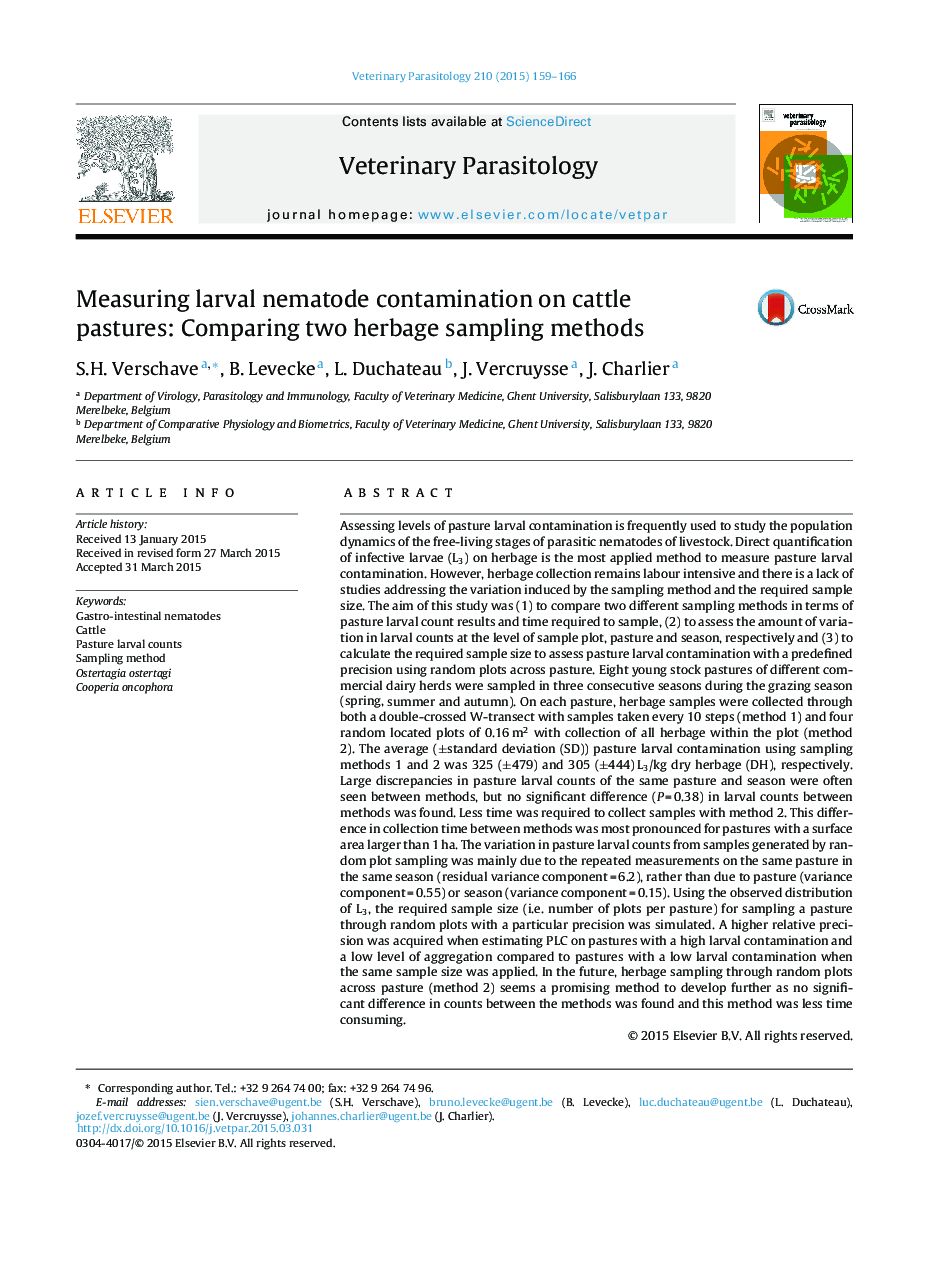| کد مقاله | کد نشریه | سال انتشار | مقاله انگلیسی | نسخه تمام متن |
|---|---|---|---|---|
| 5802457 | 1555670 | 2015 | 8 صفحه PDF | دانلود رایگان |
- Comparison of two herbage sampling methods to measure pasture larval contamination.
- Methods are compared in terms of larval count results and time required to sample.
- Assessment of the main sources of variation in the pasture larval counts.
- Simulation of sample size requirements for measuring larval contamination.
- A new, less time consuming sampling method is proposed as future sampling approach.
Assessing levels of pasture larval contamination is frequently used to study the population dynamics of the free-living stages of parasitic nematodes of livestock. Direct quantification of infective larvae (L3) on herbage is the most applied method to measure pasture larval contamination. However, herbage collection remains labour intensive and there is a lack of studies addressing the variation induced by the sampling method and the required sample size. The aim of this study was (1) to compare two different sampling methods in terms of pasture larval count results and time required to sample, (2) to assess the amount of variation in larval counts at the level of sample plot, pasture and season, respectively and (3) to calculate the required sample size to assess pasture larval contamination with a predefined precision using random plots across pasture. Eight young stock pastures of different commercial dairy herds were sampled in three consecutive seasons during the grazing season (spring, summer and autumn). On each pasture, herbage samples were collected through both a double-crossed W-transect with samples taken every 10 steps (method 1) and four random located plots of 0.16 m2 with collection of all herbage within the plot (method 2). The average (±standard deviation (SD)) pasture larval contamination using sampling methods 1 and 2 was 325 (±479) and 305 (±444) L3/kg dry herbage (DH), respectively. Large discrepancies in pasture larval counts of the same pasture and season were often seen between methods, but no significant difference (P = 0.38) in larval counts between methods was found. Less time was required to collect samples with method 2. This difference in collection time between methods was most pronounced for pastures with a surface area larger than 1 ha. The variation in pasture larval counts from samples generated by random plot sampling was mainly due to the repeated measurements on the same pasture in the same season (residual variance component = 6.2), rather than due to pasture (variance component = 0.55) or season (variance component = 0.15). Using the observed distribution of L3, the required sample size (i.e. number of plots per pasture) for sampling a pasture through random plots with a particular precision was simulated. A higher relative precision was acquired when estimating PLC on pastures with a high larval contamination and a low level of aggregation compared to pastures with a low larval contamination when the same sample size was applied. In the future, herbage sampling through random plots across pasture (method 2) seems a promising method to develop further as no significant difference in counts between the methods was found and this method was less time consuming.
Journal: Veterinary Parasitology - Volume 210, Issues 3â4, 15 June 2015, Pages 159-166
